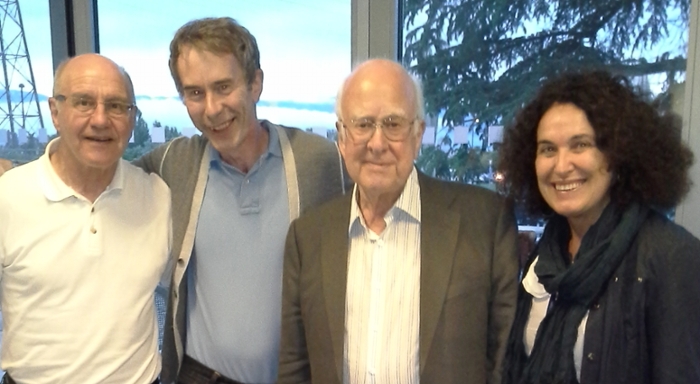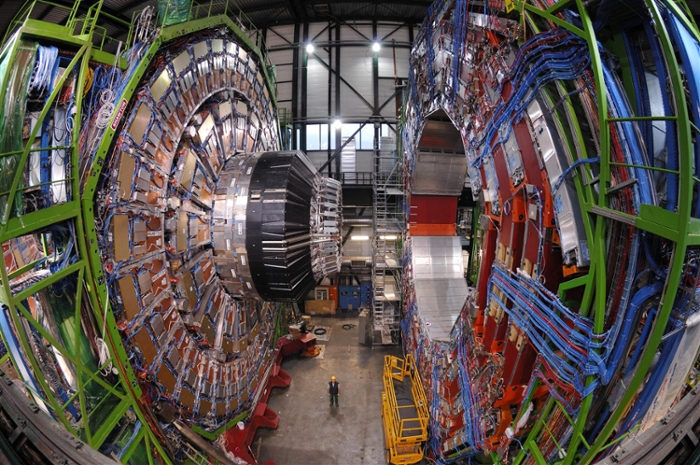Purdue physicists part of discovery of new particle that could be Higgs boson
07-06-2013
Author(s): Elizabeth K. Gardner

Purdue University scientists were part of a historical event this 4th of July as scientists working on the biggest international experiment in particle physics history announced the discovery of a new particle that may be the long-sought Higgs boson.
Purdue's particle physics group has been a part of the more than two-decade search for the elusive particle, which could confirm the Standard Model of physics and provide insight into how the universe formed.
Daniela Bortoletto, the Edward Purcell Distinguished Professor of Physics, and Ian Shipsey, the Julian Schwinger Distinguished Professor of Physics, attended the announcement at the European Organization for Nuclear Research, or CERN, laboratory in Geneva, Switzerland.
"On a day where fireworks lit up skies across America, the world of science unveiled explosive news concerning the longtime elusive Higgs boson particle," said Shipsey, who also is the co-coordinator of the Large Hadron Collider Physics Center at Fermilab, near Chicago, and was recently elected chair of the Compact Muon Solenoid Collaboration Board at CERN. "More data are needed to establish whether this new particle has all the properties of the Standard Model Higgs boson or whether some do not match, which would imply new physics beyond the Standard Model. Either way we've discovered one more key to unlock the mysteries of the universe."
The announcement was received with cheers during a joint seminar at CERN and the ICHEP Conference in Melbourne, Australia.
The results came from experiments using the largest machine ever built by mankind, the 27 kilometer-long Large Hadron Collider or LHC. Superconducting magnets that drive the collider are kept at 1.9 Kelvins, colder than outer space, and billions of protons traveling near the speed of light collide at the world record energy of 8 trillion electron volts. The energy of these collisions transforms into tiny subatomic particles, which may never have been seen before and some of which live for only one-trillionth-of-one-trillionth of a second.
The Compact Muon Solenoid is one of three detectors at the LHC that captures traces of these tiny particles. It is, in essence, a 14,000-ton camera the size of a four-story office building that almost completely surrounds one section of the collider and takes up to 40 million pictures every second.

